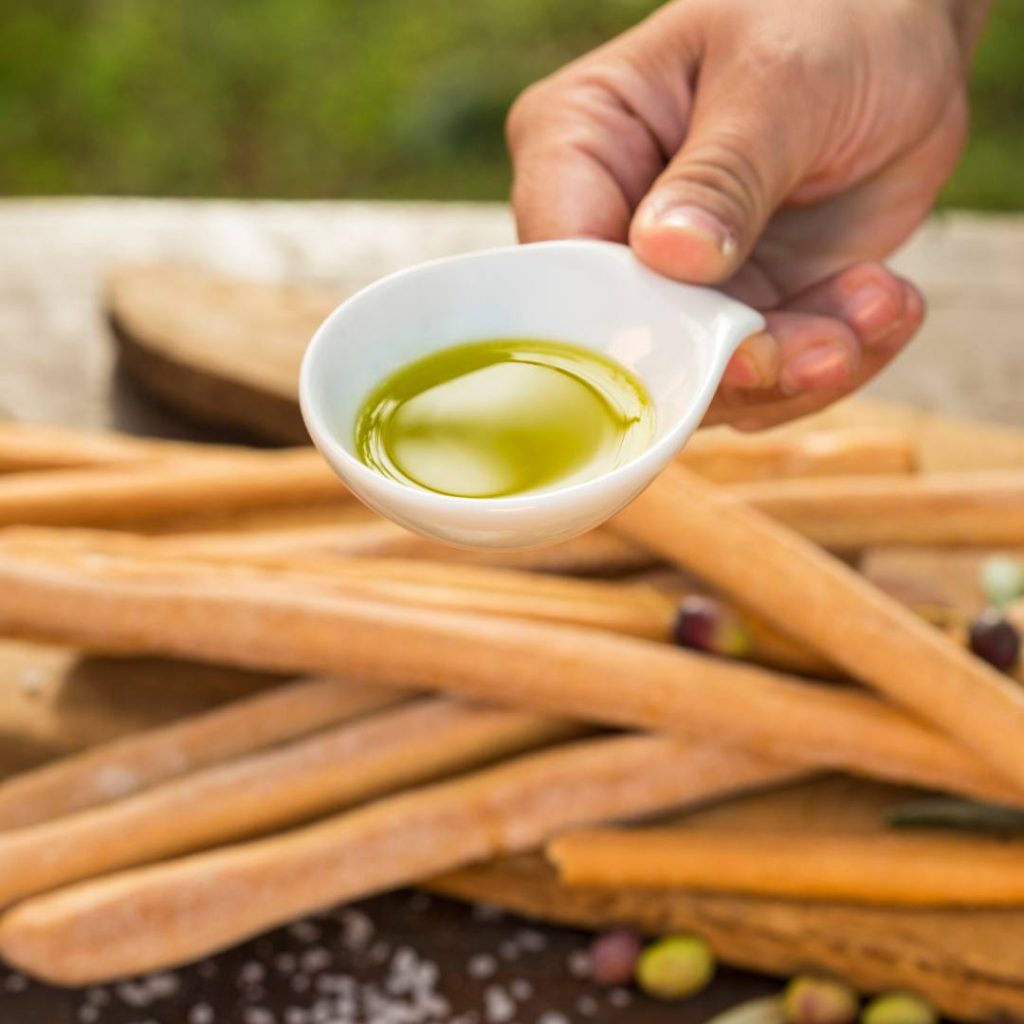Sensory analysis of oil
Sensory analysis of the oil is a more valuable guide to its quality than chemical or physical analysis. It can happen that oils with excellent chemical parameters have organoleptic defects (taste, aroma, fragrance) which may disqualify a product. Sensory analysis (tasting) of the oil is still the best way to identify the organoleptic characteristics of virgin olive oils. Sensory analysis involves a sequence of three assessments:
- Visual: the product is examined in terms of colour and hue under the light and chromatic effect.
- Olfactory: it is a question of examining the fragrances emanating from an oil, both primary (perceived immediately) and secondary (usually perceived as an aftertaste).
- Taste: the positive attributes of extra virgin olive oil are evaluated in terms of fruity, bitter and spicy, and all the various sensations that the oil develops on the palate.
